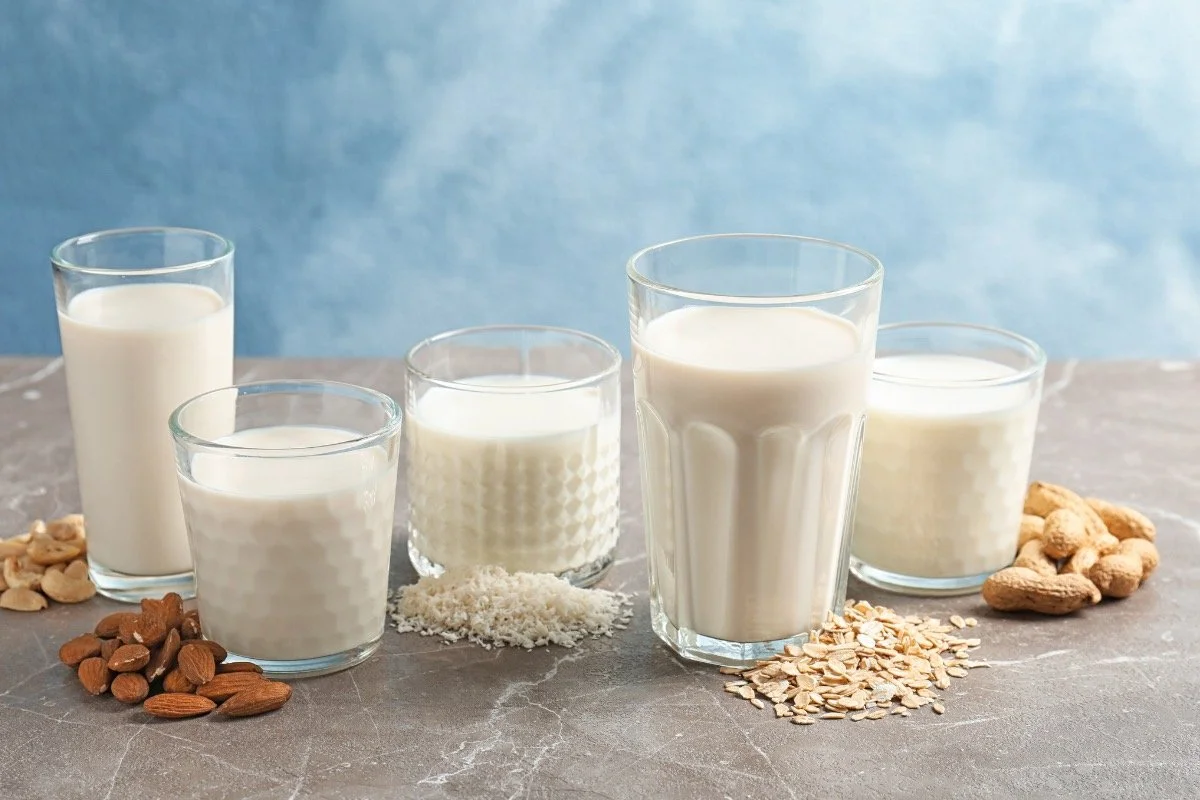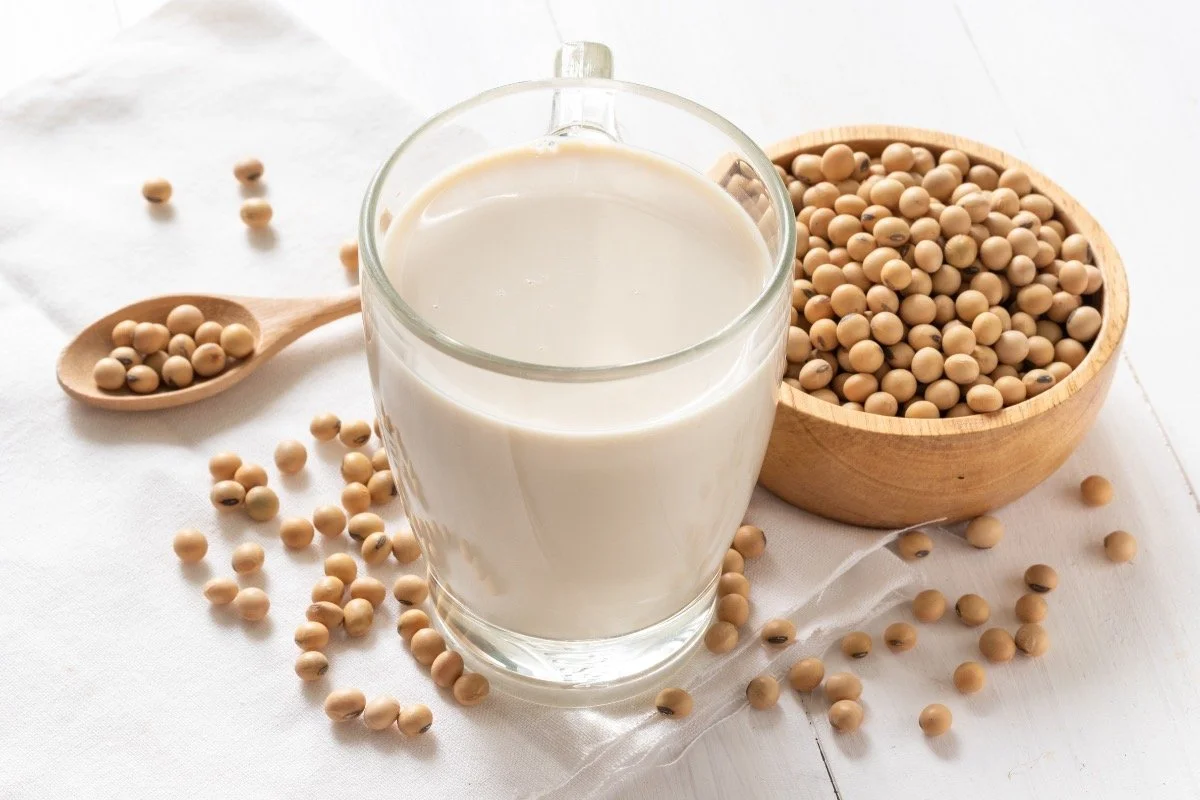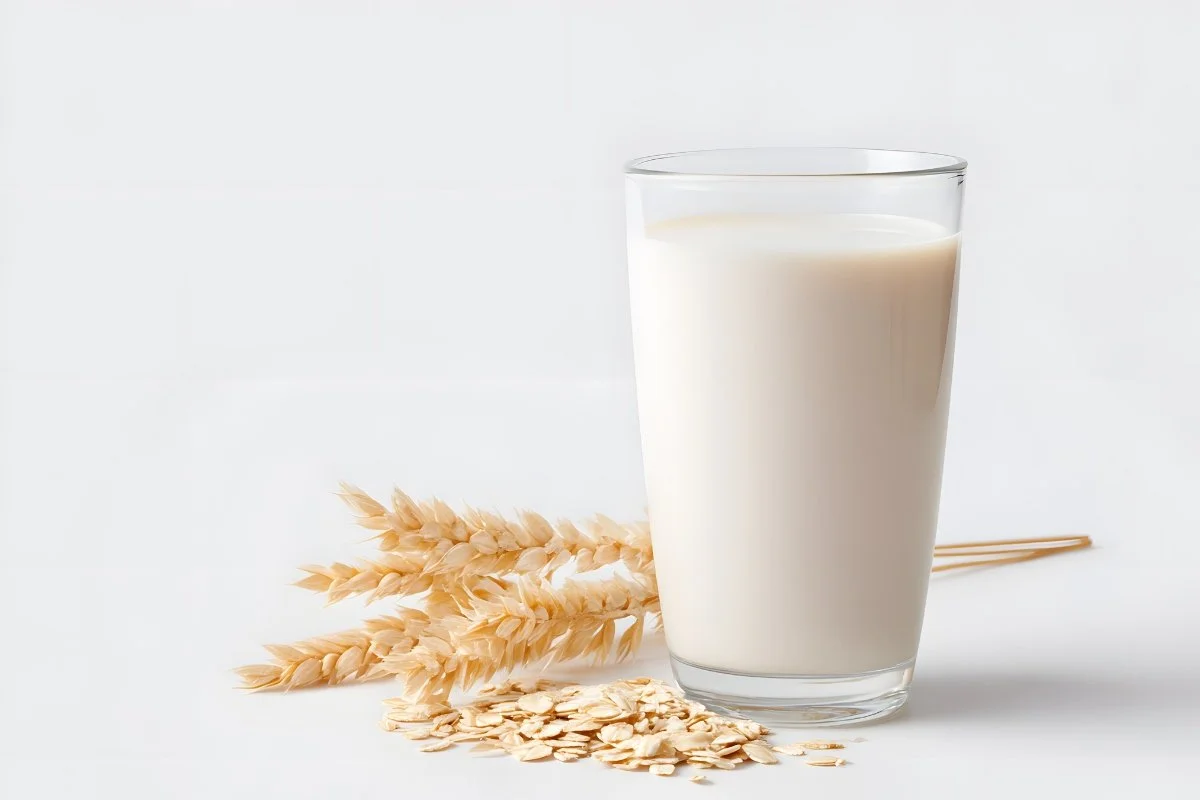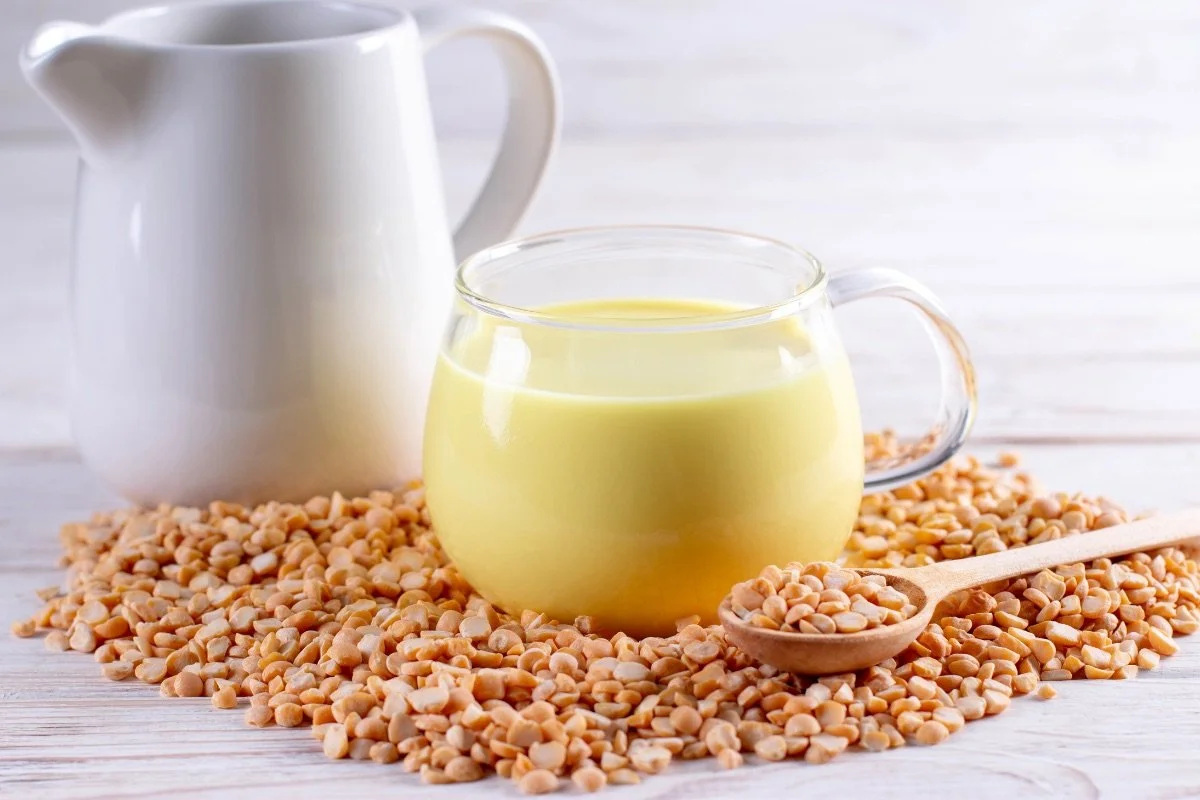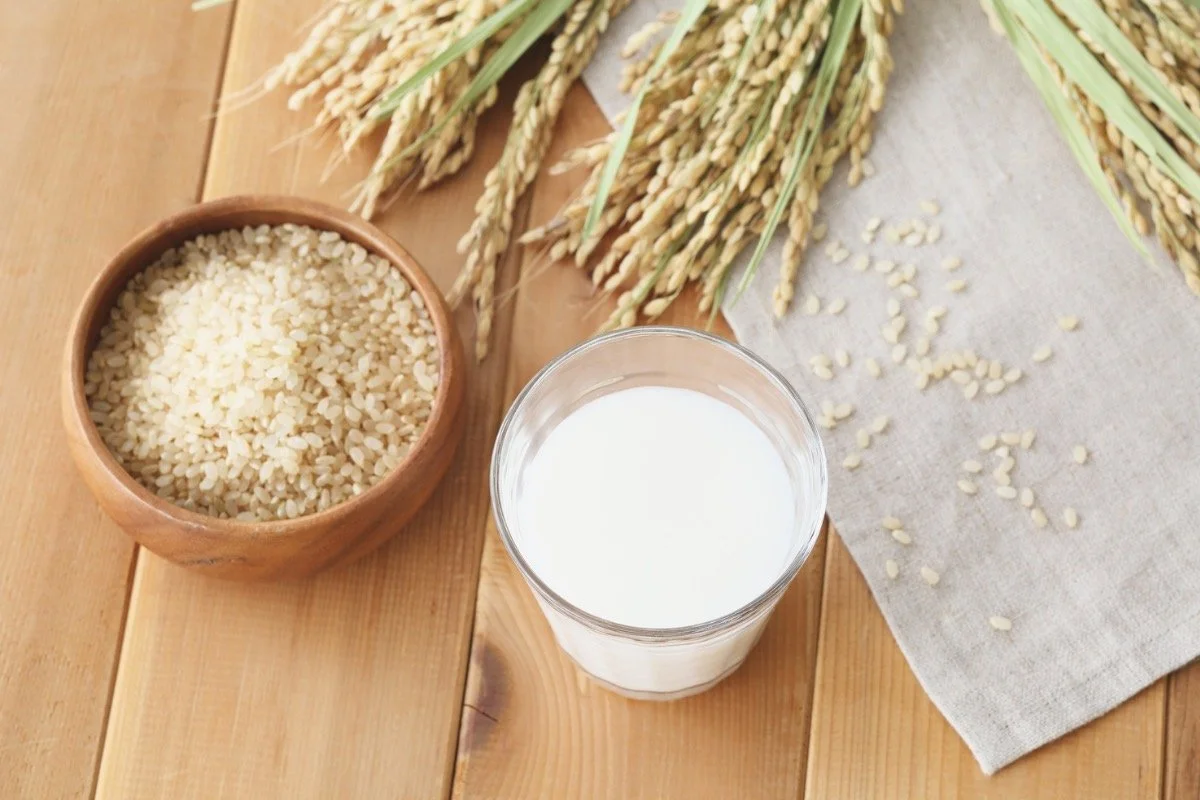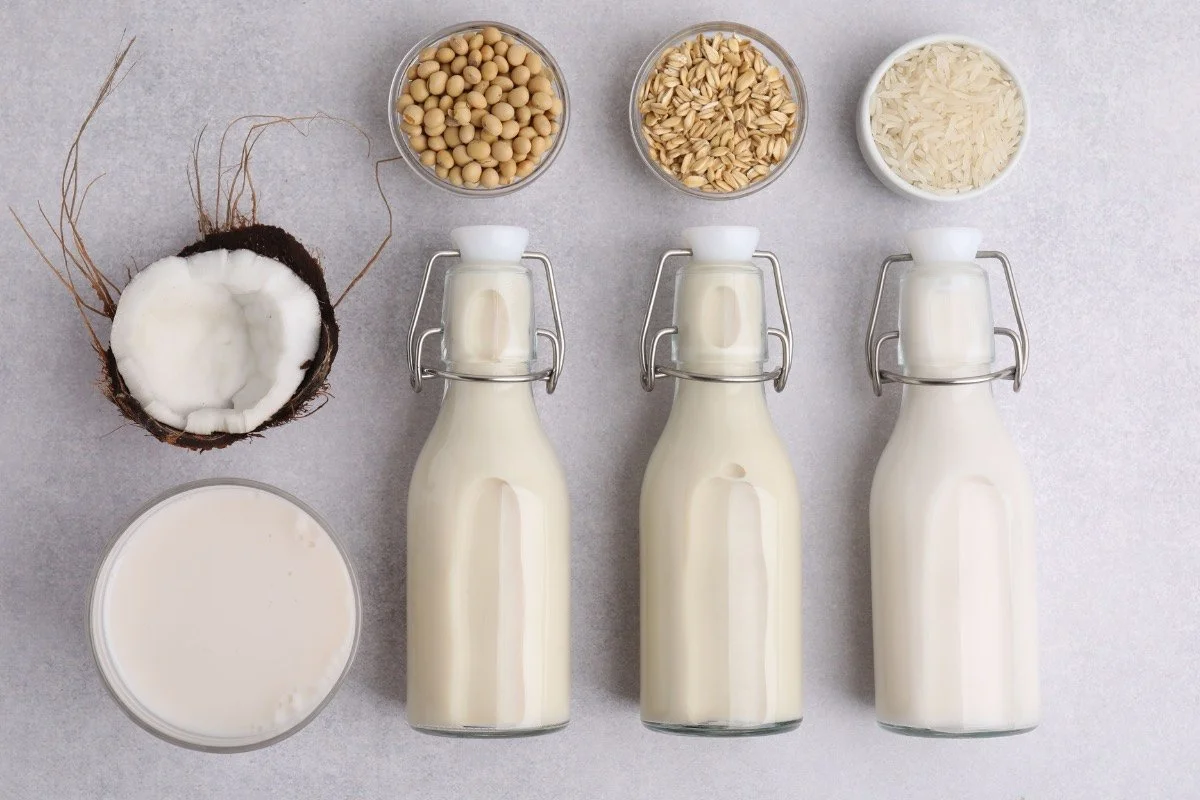Best Milk For Kids: A Guide For Parents
With so many types of milk on the shelves these days - cow’s milk, oat, soy, almond, pea, and more - figuring out which one is best for your child can feel like an impossible task.
To help you out, here’s a guide to choosing the best milk for kids: what’s really in each type of milk, how they stack up nutritionally, and how to pick the best one for your child’s needs (without spending twenty minutes in the dairy aisle).
Cow’s milk
Cow’s milk is naturally rich in nutrients like protein, calcium, and B vitamins, making it a staple in many children’s diets.
Commercial cow’s milk is pasteurized to destroy harmful bacteria and often homogenized to evenly distribute the fat and provide a smooth, creamy texture.
The fat content varies depending on the type - full-cream milk has around 3.5% fat, reduced-fat milk about 1–2% fat, and skim milk less than 0.5% fat.
Nutrition benefits
Excellent source of high-quality protein: cow’s milk provides around 8 g of protein per cup - important for growth, muscle development, and tissue repair.
Rich in calcium: provides roughly 300 mg of calcium per cup, essential for building strong bones and teeth.
Contains key vitamins and minerals: naturally provides vitamin B2 (riboflavin), vitamin B12, phosphorus, zinc, magnesium, and iodine, which support immune function and brain development.
Energy and fat for growth: full-cream milk offers a good amount of calories and fat, which are particularly important for children under 2 as they are growing and developing rapidly.
Potential downsides (when it might not be a good choice)
Cow’s milk allergy (CMA): an allergy to the protein in cow’s milk affects some infants and young children and can cause symptoms such as rashes, vomiting, diarrhea, or digestive issues.
Many children outgrow CMA by school age, but until then, a pediatrician or dietitian should be consulted on safe alternatives such as soy-based formula, hypoallergenic formula, or, for older children, fortified soy or pea protein milk.
Lactose intolerance: a smaller number of children have difficulty digesting lactose, the natural sugar in milk.
This is not an allergy, but can cause bloating, wind, and tummy pain. In these cases, lactose-free cow’s milk - which has the lactose broken down to allow for easier digestion - provides the same nutrients and is usually well-tolerated.
Not suitable for babies: babies under 12 months should be given breastmilk or infant formula rather than cow’s milk, as cow’s milk doesn’t provide the balance of nutrients and energy that babies need.
Concern about mucus or inflammation: research doesn’t currently support the idea that cow’s milk increases mucus or inflammation in most people.
However, if dairy consistently causes symptoms such as stomach pain, reflux, or altered bowel habits, it’s best to discuss this with your doctor or dietitian before removing it from your child’s diet.
Ethical or environmental concerns: some families choose to limit or avoid cow’s milk for cultural, personal, or environmental reasons.
In this case, it’s important to replace use fortified plant-based milks (with added calcium, vitamin B12, and ideally vitamin D) and ensure children get enough protein, healthy fats, and energy from other foods.
Related Article: Cow’s Milk Allergy In Babies and Children
Suitability for children
Babies (<12 months): cow’s milk shouldn’t be given as a main drink before 12 months as it’s not nutritionally adequate. Use breastmilk or infant formula instead.
Toddlers (12–24 months): full-cream cow’s milk is recommended for most children after 12 months as it provides the fat, protein, and nutrients needed for growth and development.
Children over 2 years: from the age of 2, you can switch to reduced-fat milk if your child’s growth and appetite are good and dietary intake is balanced.
Allergies and intolerances: if CMA or lactose intolerance is diagnosed, discuss an appropriate alternative with your child’s doctor or pediatric dietitian.
Related Article: When Can Babies Have Cow’s Milk in Cereal?
What about A2 milk?
A1 and A2 milk come from cows that produce slightly different types of beta-casein protein - a key protein found in milk.
Most conventional cow’s milk contains a mix of A1 and A2 beta-casein, while A2 milk comes from cows that naturally produce only the A2 type.
This small protein difference may affect how some people digest milk.
Some studies suggest that A2 milk may be gentler on the stomach and less likely to cause discomfort, such as bloating or gas, in people who are sensitive to regular milk, although research in this area is still in its early stages.
Nutritionally, A1 and A2 milk are otherwise very similar, with the same levels of protein, calcium, and other essential nutrients.
Advice for parents
What type of cow’s milk to choose?
Under 2 years: choose full-cream cow’s milk unless otherwise advised (but remember, it’s not suitable as a main drink for babies under 12 months).
Over 2 years: reduced-fat varieties are suitable if overall growth and diet are adequate.
A2 milk is worth a try if your child experiences mild digestive discomfort with regular cow’s milk but doesn’t have a diagnosed lactose intolerance or cow’s milk allergy.
Serve size: roughly 1–2 cups (250–500 mL) per day is plenty for most young children over 12 months. Too much milk can displace appetite for other foods and increase the risk of nutrient deficiencies.
For lactose intolerance: use lactose-free cow’s milk for lactose intolerance.
For cow’s milk allergy: use an appropriate fortified plant-based alternative (e.g., soy or pea milk) under the guidance of a health professional.
Don’t cut dairy unnecessarily: if you suspect dairy is causing issues, talk with your pediatrician or a dietitian before eliminating it - unnecessarily restricting milk can reduce calcium and protein intake.
Related Article: The Ultimate Guide To Introducing Allergens to Babies
Choose cow’s milk if…
Your child tolerates dairy and you want a naturally rich source of protein, calcium, and key nutrients like vitamin B12 and iodine.
Soy Milk
If your child can’t have cow’s milk or your family prefers a plant-based option, fortified soy milk is generally the closest match to cow’s milk nutritionally, particularly in terms of protein content.
Soy milk is made from whole soybeans that are soaked, ground, heated, and filtered, or from soy protein isolate mixed with water.
Commercial soy milks are often fortified with calcium, vitamin D, and vitamin B12, and sometimes vitamin A and iodine, to make their nutrient profile comparable to cow’s milk. They may also contain small amounts of vegetable oil, emulsifiers, or stabilizers to improve the consistency, and in some cases are sweetened or flavored.
Nutrition benefits
High in protein: soy milk is one of the few plant-based milks that provides similar protein to cow’s milk - around 7-9 g per cup.
Balanced energy and fat content: soy milk provides a similar amount of energy and fat to cow’s milk, and most of the fat is unsaturated fat.
Fortification: fortified soy milk can provide calcium, vitamin D, vitamin B12, and sometimes iodine, making it one of the most complete plant-based milk alternatives.
Low in saturated fat: soy milk contains less saturated fat than full-cream cow’s milk.
Dairy and lactose free: suitable for people with lactose intolerance or dairy allergy (unless there is also a soy allergy).
Isoflavones (plant compounds): soy contains naturally occurring phytoestrogens called isoflavones, which may offer heart health and cholesterol-lowering benefits. Research shows they are safe for children when consumed as part of a balanced diet.
Potential downsides (when it might not be a good choice)
Soy allergy: soy is one of the top eight food allergens. Children with a soy allergy must avoid soy milk and soy-based products.
Fortification varies: not all soy milks are fortified equally - some organic versions may lack calcium, vitamin D, or B12. Always check the label (any added vitamins or minerals will be listed in the ingredients).
Added sugars: some soy milks, particularly flavored varieties, can contain significant amounts of added sugar. Choose unsweetened varieties where possible.
Processing and additives: commercial soy milks can contain gums or stabilizers. These are generally considered safe but can be avoided by choosing simpler formulations if preferred.
Suitability for children
Babies (<12 months): soy milk is not suitable as a main drink for babies under 12 months, as it’s not nutritionally adequate. Use breastmilk or infant formula (soy-based under the guidance of a health professional) instead.
Children 12 months and older: fortified, unsweetened soy milk can be a suitable alternative to cow’s milk. It provides similar amounts of protein and energy, along with calcium, vitamin D, and B12 when fortified.
Children with lactose intolerance or dairy allergy: fortified soy milk is generally the best alternative among plant-based milks, provided your child doesn’t also have a soy allergy (around 10-14% of children with cow’s milk protein allergy also react to soy protein).
Advice for parents
Choose fortified and unsweetened varieties: look for soy milk providing at least 100 mg calcium per 100 ml.
Check protein and sugar content: aim for ≥7 g protein per cup and avoid added sugars (keep in mind that some sugar will be shown on the nutrition information panel even in unsweetened varieties, as this is the natural sugar present in soybeans - the ingredients list will tell you whether sugar has actually been added).
For children under 12 months: use breastmilk or infant formula only - not regular soy milk.
For children with multiple allergies: discuss with your pediatrician or dietitian to ensure the milk alternative you choose meets your child’s
nutrition needs.
Related Article: How to Introduce Soy to Baby
Consider soy milk if…
Your child is over 12 months and has a cow’s milk allergy - but can tolerate soy - or you prefer a plant-based option that’s closest to cow’s milk in protein and overall nutrition. Just make sure it’s calcium-fortified.
Oat Milk
Oat milk has skyrocketed in popularity lately, largely because of its naturally sweet taste and creamy texture.
But from a nutrition perspective, it’s much lower in protein than most other milks and may contain added sugar.
Oat milk is made from whole oats, which are soaked and milled with water. Sometimes enzymes are added to break down some of the starch into sugars (this helps make the drink naturally sweet and smooth).
Emulsifiers and stabilizers are also often added along with small amounts of oil to improve consistency, and most commercial oat milks are fortified with vitamins and minerals (such as calcium, B12 and vitamin D).
Nutrition benefits
Creamy texture and mild, slightly sweet flavor, which many kids like.
Low in saturated fat compared with full-fat cow’s milk and dairy alternatives that include coconut.
Often fortified with calcium, vitamin D and B12 - when fortified, oat milk can be a reasonable source of these key nutrients.
Suitable for those avoiding dairy or soy
Potential downsides (when it might not be a good choice)
Low in protein: most oat milks contain far less protein than cow’s milk or soy milk - many brands have only around 1 g protein per 100 mL (compared to ~3.5g per 100ml cow’s milk).
Added sugars: flavored or sweetened oat milks can contain significant amounts of added sugar.
Fortification varies: calcium, iodine, vitamin D and B12 levels vary by brand. Not all oat milks contain iodine, an essential nutrient for children’s brain development.
Contains starch-derived sugars: the enzymatic processing that makes oat milk naturally sweet can increase simple sugars in the final product more than you’d expect from the oat content alone.
Gluten/cross-contamination: oats themselves are naturally gluten-free, but they’re often processed alongside wheat/barley. If you need to completely avoid gluten, choose certified gluten-free oat milk if it’s available in your country (gluten-free oat milks aren’t available in some countries such as Australia and New Zealand).
Additives: commercial oat milks often include oils, gums or emulsifiers. These are generally considered safe, but worth noting if your family prefers minimal-ingredient products.
Not suitable as a sole milk drink for toddlers: for children under 2 years, oat milk is generally not recommended as the main milk due to its low energy, protein, and fat content.
For older children, it can be part of the diet if fortified and balanced with other protein sources.
Suitability for Children
Not suitable as the main milk for babies or toddlers under 2 years due to low protein, fat and energy.
Can be included for older children (2+ years) as part of a balanced diet if a fortified, unsweetened variety is chosen.
A useful option for children who need to avoid dairy, soy, or nuts, provided their overall nutrient needs are met.
Advice for parents
Pick a fortified version: look for oat milks with added calcium, vitamin D and B12 and preferably iodine if available.
Check the protein: if your child relies on milk for protein (younger kids, or picky eaters), choose a higher-protein option (e.g. soy or pea milk) or ensure your child gets extra protein from foods (e.g. eggs, yogurt, meat, legumes).
Go for unsweetened: avoid varieties with added sugar.
Choose certified gluten-free if needed (and available in your country) and check labels for allergen warnings if your child has other food allergies.
For babies and toddlers: stick to breastmilk or infant formula for babies under 12 months, then use full-cream cow’s milk or a dietitian-recommended fortified alternative as a main drink from 12 months onwards. Oat milk generally isn’t appropriate as the main milk in this age group unless advised by a health professional.
If avoiding dairy completely, have a plan to meet iodine, calcium, vitamin D and protein needs - a dietitian can help with this.
Consider oat milk if…
Your child is over 2, has adequate growth, and needs a dairy, soy and nut-free option. Go for one that’s unsweetened and fortified with calcium, B12 and vitamin D (and iodine if available), and make sure you’re balancing their diet with other protein sources, under the guidance of a health professional.
Related Article: How Much Protein Do Kids Need?
Almond Milk
Almond milk has become a popular dairy alternative, but nutritionally, it’s quite different from cow’s milk. In fact, it’s generally closer to flavored water than milk.
Despite its name, almond milk usually contains only 2–5% almonds and is low in protein and other nutrients found in cow’s milk.
Almond milk is made by blending soaked almonds with water and then straining the mixture to remove the solids. Most brands add small amounts of oil and stabilizers for texture, and many are fortified with nutrients like calcium, vitamin D, and B12. They may also have added sugar for flavor.
Nutrition benefits
Low protein: almond milk is very low in protein compared with cow’s milk or fortified soy/pea milks, with only around 1g per cup in most cases.
Low calorie and low fat: unsweetened almond milk is generally low in calories and fat. This may be an advantage or disadvantage depending on who is drinking it. Younger children and children needing extra calories generally require a higher-fat milk.
Low in saturated fat: compared with full-fat cow’s milk and coconut-based drinks, almond milk tends to be low in saturated fat.
Fortified with vitamins and minerals: many commercial almond milks are fortified with calcium, vitamin D, and vitamin B12 and sometimes other micronutrients (e.g., vitamin A).
This brings almond milk closer to cow’s milk for those specific nutrients.
Lactose-free and dairy-free: suitable for people who are lactose intolerant or avoiding dairy.
Potential downsides (when it might not be a good choice)
Very low protein and energy for children: because of the low almond content and high water content, almond milk often provides only a small amount of protein and energy compared with cow’s milk.
For young children, almond milk isn’t a suitable replacement unless other protein/energy sources are increased and the product is appropriately fortified.
Fortification varies: not all brands are fortified with the same nutrients. Iodine - an important nutrient for brain development - is often absent from plant milks.
If dairy is eliminated from your child’s diet, it’s important to ensure that adequate iodine and other micronutrients are provided from other sources or fortified foods.
Added sugar: many almond milks contain added sugars to improve the flavor.
Allergy risk: goes without saying, but almond milk is unsafe for anyone with a tree-nut allergy.
Additives: emulsifiers, gums and oils are commonly used to improve texture.
These are generally considered safe, but may be a consideration for families who prefer minimal ingredient lists.
Suitability for children
Not suitable as the main milk for babies or toddlers under 2 years due to low protein, fat and energy.
Can be included for older children (2+ years) as part of a balanced diet if a fortified, unsweetened variety is chosen.
A useful option for children who need to avoid dairy or soy, provided their overall nutrient needs are met.
Not suitable for children relying on milk for nutrition: for picky eaters or children with suboptimal growth, almond milk can create gaps in protein, energy, iodine and potentially other micronutrients unless those are supplied elsewhere in the diet or via fortified products.
Not suitable for children with a nut allergy: if your child has a tree-nut allergy, almond milk must be avoided.
Advice for parents
Choose unsweetened, fortified versions if almond milk is going to be used regularly - check the label for calcium, vitamin D and B12; look specifically for products that contain iodine if dairy is being fully avoided.
Avoid flavored/sweetened varieties to limit added sugars.
If using almond milk often, plan additional sources of protein and energy - for example, eggs, yogurt, cheese, meat, legumes and nut butter where age-appropriate.
For babies and toddlers: stick to breastmilk or infant formula for babies under 12 months, then use full-cream cow’s milk or a dietitian-recommended fortified alternative as a main drink.
Almond milk generally isn’t appropriate as the main milk in this age group unless advised by a health professional.
Related Article: How to Introduce Nuts to Baby Safely
Consider almond milk if…
Your child is over 2, has adequate growth, and needs a cow’s milk and soy-free milk option. Go for one that’s unsweetened and fortified with calcium, and ensure that you’re balancing their diet with other protein sources under the guidance of a health professional.
Pea Milk
A newer option, pea milk (or pea protein milk) - made from yellow split peas - is one of the few plant milks that rivals cow’s milk for protein.
It’s also low in allergens, making it a great choice for some families avoiding dairy.
Nutritionally, pea milk stands out among plant-based alternatives because it contains a similar amount of protein to cow’s milk (around 8 g per cup).
It’s generally fortified with calcium, vitamin D, and vitamin B12 and is naturally low in saturated fat and carbohydrates.
Another advantage is that pea protein milk is free from common allergens such as dairy, soy, and nuts, making it a suitable option for families managing food allergies or intolerances.
Nutrition benefits
High protein content: one of the few plant-based milks that provides a similar amount of protein to cow’s milk- usually around 7-9 g per cup.
Low in saturated fat: most brands use unsaturated oils to improve the texture.
Moderate energy and carbohydrate levels: typically lower in carbohydrates than oat milk and lower in total energy than full-fat cow’s milk.
Fortification: many products are fortified with calcium, vitamin D, and vitamin B12, and some also include vitamin A and iodine, making them suitable alternatives for those avoiding dairy.
Allergy-friendly: free from common allergens such as dairy, soy, and nuts, making it a useful option for families managing allergies or intolerances.
Neutral taste and creamy texture: the mild flavor is often well accepted by children and adults alike and works well in cereals, smoothies, and cooking.
Potential downsides (when it might not be a good choice)
Sodium content: some commercial pea milks can be relatively high in added sodium, especially barista or flavored versions designed for coffee. Always check the label if sodium intake is a concern.
Fortification varies: not all brands are fortified with the same nutrients, particularly iodine, which is important for children’s brain development and thyroid function.
Additives: like other commercial plant milks, pea milk may contain emulsifiers, gums, and stabilizers. These are generally considered safe for most people but can be avoided by choosing minimal-ingredient brands if preferred.
Allergy cross-contact: while yellow peas themselves are not a major allergen, people with legume allergies (e.g., peanut or chickpea allergy) should check with a health professional whether pea milk is suitable for them.
Suitability for children
Toddlers (<2 years): like other plant-based milks, pea protein milk is not recommended as the main milk for children under two years. Breastmilk or infant formula remains the preferred option at this age, and whole cow’s milk can be introduced after 12 months if tolerated.
Older children: for children over two years, fortified pea protein milk can be a very good alternative if cow’s milk or soy milk is unsuitable, particularly because of its higher protein and calcium content compared with almond, rice, or oat milks.
Allergy considerations: suitable for most children with dairy, soy, or nut allergies, but should be used with caution in children with broader legume allergies.
Unfortified versions: should not be relied upon as a primary milk source, as they may lack calcium, vitamin D, and other essential nutrients.
Advice for parents
Choose fortified, unsweetened varieties - look for products with added calcium, vitamin D, and vitamin B12. Iodine fortification is a bonus if an iodine-fortified option is available.
Check the protein content - aim for a product with 7-9 g protein per cup, which is comparable to cow’s milk.
Watch sodium levels - select versions with less than ~100 mg sodium per 100 mL if using regularly.
Avoid flavored/sweetened varieties to limit added sugars.
Consider pea milk if…
You want a plant-based alternative that’s higher in protein and more similar to cow’s milk nutritionally than most other dairy and soy-free options.
Rice Milk
Rice milk is made by blending milled white or brown rice with water, then filtering it and adding nutrients such as calcium, vitamin B12, and vitamin D.
Some commercial versions also contain added oils or emulsifiers for creaminess and consistency.
Naturally, rice milk has a mild, slightly sweet flavor due to the breakdown of rice starch into sugars during processing.
Nutrition benefits
Low in allergens: rice milk is naturally free from dairy, soy, nuts, and gluten, making it one of the most hypoallergenic milk alternatives available.
Easily digested: its simple carbohydrate composition makes it gentle on the digestive system - often suitable for children with multiple food allergies or intolerances.
Low in saturated fat: compared with full-cream cow’s milk, rice milk is low in fat and contains mainly unsaturated fats when oils are added during processing.
Potential downsides (and when it might not be a good choice)
Very low in protein and fat: rice milk provides around 1 g of protein and 1–2 g of fat per cup - much less than cow’s milk (~8 g protein, 8 g fat per cup).
This generally makes it unsuitable as a main milk source for children under five unless advised by a pediatrician or dietitian and supported with other protein and energy-rich foods.
Naturally high in carbohydrates: rice milk contains around 10–12 g of carbohydrate per cup, mostly as natural sugars, which can make it less filling and balanced compared with other milk options.
Not appropriate for infants: standard rice milk should never be used as a breastmilk or formula substitute for babies under 12 months as it lacks the essential nutrients and energy needed for growth.
Arsenic concerns: rice naturally absorbs more inorganic arsenic from soil and water than other grains.
While some countries require that rice milk meets certain safety standards (EU, Australia), it’s not recommended as the main milk drink for infants and toddlers, especially in large quantities due to the potential for unsafe levels of arsenic exposure.
In the UK, the Food Standards Agency (FSA) advises against giving rice milk to children under 5 years old as a substitute for breast milk, or infant formula (or cows’ milk after 1 year old) as they may contain too much arsenic.
Fortification varies: always check labels - some brands are not fortified, which means they lack key nutrients like calcium and B12.
May separate in hot drinks or cooking: because of its lower protein and fat content, rice milk can have a thinner consistency than cow’s milk in some recipes.
Suitability for children
Infants (<12 months): rice milk is not suitable - use breastmilk or infant formula instead.
Toddlers (12–24 months): generally not recommended as a main milk drink due to its low protein and fat content, along with the risk of unsafe levels of arsenic exposure.
Children over 2 years: may be used occasionally or as part of a varied diet if fortified and if overall protein, energy, and fat needs are met from other foods. However, in the UK, the Food Standards Agency (FSA) advises against giving rice milk to children under 5 years old as a substitute for breast milk, or infant formula (or cows’ milk after 1 year old) due to potential arsenic exposure.
Allergies and intolerances: rice milk can be a good option for children who can’t tolerate cow’s milk, soy, or nuts - as long as it’s fortified and part of a balanced diet. However, there are some concerns about arsenic exposure in younger children, so it’s best to seek guidance from a dietitian as to whether rice milk is appropriate for your child.
Advice for parents
Choose fortified varieties: look for rice milk with added calcium (at least 100 mg per 100 mL), vitamin B12, and ideally vitamin D.
Check the ingredient list: avoid unfortified or flavored versions that contain added sugars.
Limit use for young children: rice milk can be used occasionally in cooking or cereal, but should not replace breastmilk, formula, or cow’s/soy/pea milk as the main milk drink for children.
Check your country’s regulations regarding arsenic: regulations and safety limits for rice-based products vary between countries, so check your local food safety guidelines before offering rice milk regularly, especially for young children.
Choose rice milk if…
Your child is over 2, has adequate growth, and needs a cows’ milk and soy free option. Go for one that’s unsweetened and fortified with calcium, and ensure that you’re balancing their diet with other protein sources under the guidance of a health professional. Also check your countries guidelines regarding arsenic in rice-based products.
Related Article: How Much Protein Do Kids Need?
Coconut Milk
Coconut milk is made by blending the flesh of mature coconuts with water, then straining it to create a smooth, creamy liquid.
There are two main types of coconut milk: the thick, creamy type used for cooking - usually found in cans - and the lighter coconut milk beverages sold in cartons as dairy substitutes.
Coconut milk beverages are typically diluted with extra water to create a lighter product, and they often include stabilizers or emulsifiers to improve the consistency. Many are also fortified with nutrients like calcium, vitamin D, and vitamin B12.
Coconut milk has a naturally sweet flavor that many children like, and a creamy texture that works well in smoothies, cereal, or cooking.
Nutrition benefits
Allergy-friendly: Coconut milk is free from dairy, soy, gluten, and nuts (although coconuts are technically classified as tree nuts, true coconut allergy is rare).
This makes it a potential option for children with multiple food allergies.
Rich, creamy texture: The high natural fat content gives coconut milk its creaminess, making it appealing to children who prefer a richer taste.
Contains medium-chain triglycerides (MCTs): These are a type of fat that can be used by the body as a quick source of energy, although the overall health effects depend on the type and amount consumed.
Low in sugar: Compared with rice or oat milk, coconut milk is naturally low in sugar.
Fortification can improve its nutritional value: Fortified coconut milk drinks can provide added calcium, vitamin D, and vitamin B12 - key nutrients for kids who don’t consume dairy.
Potential downsides (when it might not be a good choice)
High in saturated fat: Coconut milk is one of the highest-fat plant-based milks, with most of its fat being saturated.
While small amounts are fine, large amounts may not be ideal for children if it replaces other healthy fat sources like olive oil, avocado or nuts.
Very low in protein: Coconut milk contains very little protein (typically <1 g per cup), far less than cow’s milk (8 g per cup) or soy/pea-based alternatives.
This makes it unsuitable as a main milk drink for growing children.
Varies a lot in energy and nutrient content: Some brands are highly diluted (with <5% coconut content), while others are richer and higher in fat.
Always check the nutrition information panel so you know what you’re getting.
Fortification isn’t consistent: Not all brands are fortified, so choosing one with added calcium (at least 100 mg per 100 mL) and vitamin B12 is important, especially if your child doesn’t consume dairy.
Not suitable for infants: Coconut milk should never be used as a substitute for breastmilk or infant formula in babies under 12 months - it doesn’t provide the energy, protein, or micronutrients required for healthy growth.
Can overpower other flavors: Due to its distinct coconut taste, it may not be suitable for all recipes.
Suitability for children
Infants (<12 months): Not suitable - use breastmilk or infant formula.
Toddlers (12–24 months): Not recommended as the main milk drink due to low protein and unbalanced fat composition.
Small amounts can be used in cooking or smoothies for flavor.
Children over 2 years: Can be included occasionally as part of a varied diet, especially if fortified and if overall protein and nutrient needs are met through other foods.
For children with allergies: Coconut milk can be useful for those avoiding dairy, soy, and nuts - provided a fortified version is chosen and their diet includes other protein and healthy fat sources.
Advice for parents
Choose fortified varieties: Look for coconut milk with added calcium (≥100 mg/100 mL), vitamin B12, and vitamin D.
Read labels carefully: Avoid flavored or sweetened versions that contain added sugar.
Balance the diet: Combine coconut milk with other foods rich in protein (eggs, legumes, tofu, meat, or dairy alternatives) and healthy fats (avocado, nuts, seeds, olive oil).
Use small amounts in cooking: Coconut milk can add great flavor and creaminess to curries, porridge, or smoothies, but shouldn’t be relied on as a main drink.
Consider coconut milk if…
Your child is over 2 and needs a dairy-free option and enjoys the flavour, but keep in mind it’s low in protein and not nutritionally comparable to cow’s milk. It’s best used occasionally or in cooking rather than as an everyday drink.
Milk Comparison at a Glance
Data sourced from the Australian Food Composition Database and product nutrition information panels
There’s no one-size-fits-all ‘best milk’ for kids - the right choice depends on your child’s age, growth, diet, and family preferences.
For most children, cow’s milk - or fortified soy milk - provides the most balanced nutrition.
If your family chooses plant-based milks, check the label to make sure it’s calcium-fortified, unsweetened, and ideally provides some protein and fat.
And remember - milk is just one part of a healthy diet. A mix of different foods from all the food groups will give your child the nutrients they need to thrive.
Before you go, a quick reminder:
The information in this blog is for general educational purposes only and is not a substitute for professional medical advice, diagnosis, or treatment. Every child’s nutritional needs are different. Always consult a pediatrician, dietitian or qualified healthcare provider before making changes to your child’s diet or selecting a milk or milk alternative.

